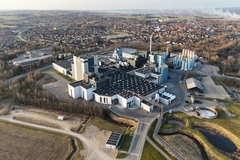
- Industry news
Industry news
- Category news
Category news
- Reports
- Key trends
- Multimedia
Multimedia
- Journal
- Events
- Suppliers
- Home
- Industry news
Industry news
- Category news
Category news
- Reports
- Key trends
- Multimedia
Multimedia
- Events
- Suppliers
Tetra Pak Reports Progress on 2020 Environmental Targets

21 Mar 2013 --- Tetra Pak has announced that in 2012 the company made further progress towards its 2020 environmental goals and its ultimate aim of providing fully sustainable packaging, using only renewable materials and leaving a minimal environmental footprint and zero waste.

Two years ago the company set ambitious 10-year targets to drive environmental excellence, focusing on three key areas: environmental footprint, sustainable products and recycling.
“We’re off to a good start, but there is still a lot to be done to achieve the 2020 targets that we set for ourselves in 2011,” said Tetra Pak President and CEO Dennis Jönsson.
“Strong environmental performance goes hand in hand with long-term business success, and we are working closely with our suppliers, customers and other external parties to ensure that we deliver on our environmental commitments, helping all of us to achieve our sustainable growth ambitions,” he said.
Highlights from 2012 include:
Double the global recycling rate for used beverage cartons by the end of the decade to 40%.
Result: Global recycling of used Tetra Pak cartons increased by 10% in 2012 - from 528 kilo tonnes to 581 kilo tonnes, which is 22.9% of the total. Some 3.6 billion more Tetra Pak packages were recycled in 2012 vs. 2011.
Luxembourg and Belgium, with recycling rates of more than 80%, and Germany, where recycling rates are above 70%, remain the star performers, while China, Russia and Arabia, starting from a low base, have virtually doubled their recycling rates during the past three years. Tetra Pak is investing tens of millions of euros to promote consumer awareness and work with local municipalities in its drive to increase recycling rates around the world.
Develop packaging based on 100% renewable materials and increase the supply of Forest Stewardship Council (FSC) certified paper board available for use in Tetra Pak packages to 100%, with an interim target to achieve 50% in 2012.
Result: Tetra Pak packages with bio-based polymer caps derived from sugar cane grew to 610 million in 2012, up from 80 million in 2011. Nestlé and Coca-Cola are among the first companies to introduce these Tetra Pak packages in South America.
Result: In 2012, 26.4 billion Tetra Pak packages carried the FSC label in 39 countries around the world, a 40% increase over 2011. Tetra Pak increased the supply of FSC-certified paperboard to 38%, up from 34% in 2011.This fell short of the 2012 target of 50% that we set in 2011. The company is now working to bring this measure back on track, improving internal systems to better match supply and demand and working with suppliers and other stakeholders to further increase the access to FSC-certified paperboard.
Cap climate impact across the value chain at 2010 levels by the end of 2020.
Result: Initial figures indicate carbon emissions in Tetra Pak’s own operations were reduced by 2 kilo tonnes CO2 equivalents in 2012 (compared to 2010 baseline) despite a 9.5% increase in production volumes over the same period.
Through 2012, Tetra Pak worked with the World Resource Institute, with WWF, and with its suppliers and customers, to establish a baseline and metrics to be able to measure the total value chain climate goal. On average, audits performed in 2010 and 2011 found potential for reducing energy consumption in its own operations by around 12% and cutting climate impact by 11%.










